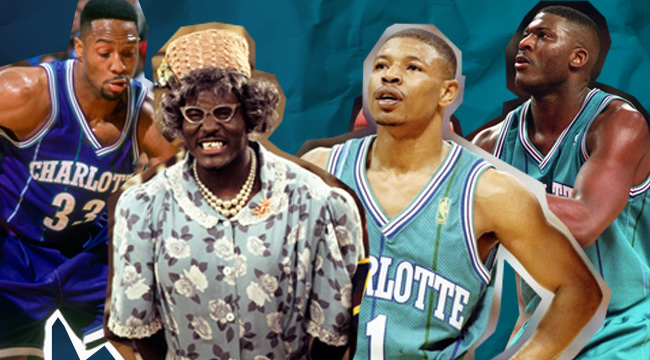
Normally, expansion teams take several years before they even sniff the playoffs. The 1992-93 Charlotte Hornets, just four years removed from their inception, said “to hell with that waiting period.” Their young, talented roster featured Alonzo Mourning, Dell Curry, Larry Johnson and Muggsy Bogues. They were an electric team, and their playoff series against the Boston Celtics gave us one of the most iconic shots in NBA history. So, where are those players now? Read on to find out.
Tony Bennett
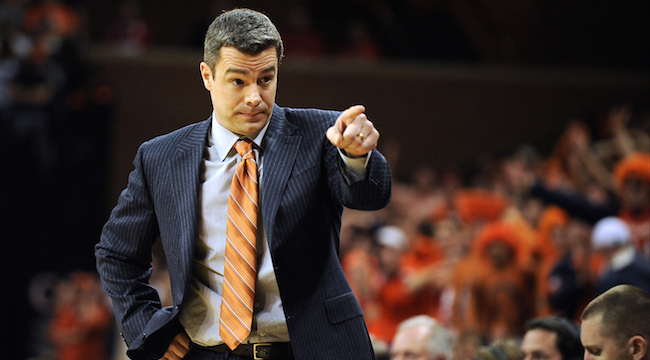
No, not the world-famous lounge singer, the slightly less famous basketball player. This year was Bennett’s rookie season, and he only saw 11.4 minutes per game — which, admittedly, is pretty good for a second-round pick. Bennett’s playing career was short lived due to a foot injury, but he didn’t stray from the hardwood. After leaving the Hornets, Bennett signed with the North Harbour Kings in New Zealand. During that time, he actually became a player/coach, and found he was pretty good at the coaching aspect. The coaching bug became a full-on viral infection, as Bennett went on to coach at Washington State and currently, the University of Virginia, where he’s heralded as one of the top defensive coaches in the country.
Muggsy Bogues
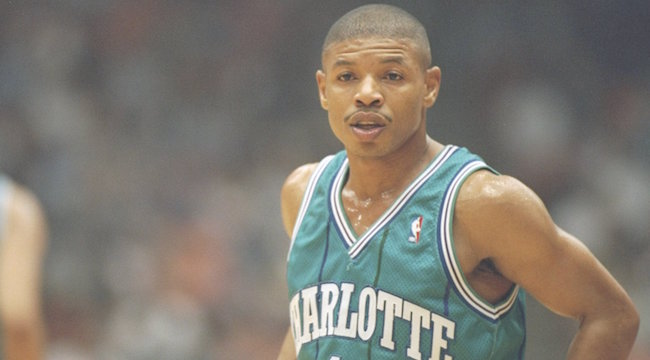
By and large, short players are a kind of novelty act in the NBA. Muggsy Bogues was no novelty act. The 1992-93 season was one of the best of his career. He averaged 10 points, 8.8 assists, 3.7 rebounds (!!) and 2.0 steals per game. He may not have measured up to anyone else on the court, but that didn’t pose much of a problem when few players could keep up with him.
Bogues enjoyed an incredibly long career, finally retiring at the age of 36. After retirement, Bogues dabbled in coaching, most notably with the Charlotte Sting of the WNBA (the team folded in January of 2007). When the then-Bobcats were rebranding and bringing back the Hornets name, it was only right that they brought Bogues back into the fold as the team’s ambassador.
Dell Curry
Before he was only known as Steph’s dad, Dell Curry was one of the elite sharpshooters in the NBA. In 1992-93, he was by far the team’s best shooter from deep, knocking down 40 percent of his three-pointers. While he didn’t start any of the 80 games he played in, his 26.2 minutes per game were the fifth-most on the team. He established himself as one of the elite bench scorers, scoring 15.3 points per game as a sixth man (one year later, he would actually win Sixth Man of the Year).
Even though Curry didn’t retire with the Hornets, Charlotte nevertheless became his home. In addition to serving as the team’s Special Projects adviser, he’s also on the exceptional Fox Sports broadcast with Stephanie Ready and Eric Collins.
Kenny Gattison
After averaging a career-high 12.7 points and 7.1 rebounds per game in 191-91, Gattison’s numbers came back down to earth the following year, averaging 6.8 points and 4.7 rebounds per game. Gattison stayed in Charlotte for six seasons, though his averages never reached their peak levels again. Most recently, Gattison was an assistant coach with the Hawks and Suns. However, his two-year contract with the Suns expired last May, and was not renewed.
Kenny also had a restaurant, Gattison’s, with a spectacular commercial.
Kendall Gill
Gill erupted in his sophomore season, averaging 20.5 points, 4.2 assists, 5.1 rebounds and nearly two steals per game this season. His averages dipped a bit in 1993, though he was still incredibly effective from almost any spot on the floor on both sides of the ball. This season would also be his last full one with the Hornets, as he was traded to the Seattle SuperSonics the following year. Currently, Gill is a commentator for Comcast SportsNet for Chicago Bulls games, as well as an analyst on NBA TV.
Gill also famously took up boxing to stay in shape and actually attempted to go pro with his first bout in June of 2005.
Mike Gminski
Gminski’s career was winding down at this point. He’d play just one more season before retiring. He was a quintessential backup big, there to provide spot minutes when the need arose. (It rarely did, as he appeared in just 34 games and averaged 7.4 minutes per game.) In 2003, Gminski – who is of Polish descent – was inducted into the National Polish American Sports Hall of Fame. In addition to being a broadcaster for the ACC Network, Gminski’s also very involved with Duke Children’s Hospital, serving as the Chairmen for the hospital’s National Board of Advisors.
Sidney Green
Green was acquired midseason from the San Antonio Spurs and was one of the elder statesmen on the team. He didn’t see much action, averaging just 5.3 minutes per game. Green retired after this season, too. Like so many other players, Green went into coaching after his playing days ended. He was a player development coach for the Chicago Bulls before moving on to an ambassador role with the team.
Tom Hammonds
In 1992, the Hornets traded Rex Chapman to the Washington Bullets, getting Hammonds in return. His stint with the Hornets was short-lived, however, as he appeared in only 19 games before they waived him. Still, Hammonds managed to carve out a 12-year career as a backup big. He discovered a second passion for drag racing stock cars while he was in Denver, and even briefly raced as a driver in the National Hot Rod Association Pro Stock series. Hammonds currently runs a commercial construction business in Florida.
Larry Johnson
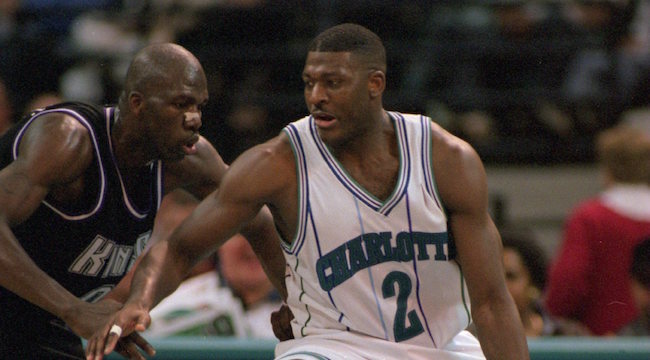
Larry Johnson was an absolute star on the Hornets this year, starting all 82 games and averaging 22.1 points, 10.5 rebounds and 4.3 assists per game. Though slightly undersized at 6’6, GRANDMAMA nevertheless played both small and power forward, and excelled at each. Keep in mind, too, that this was just Johnson’s sophomore season, yet he was already an undeniable star.
https://www.youtube.com/watch?v=VwGnE3bnYkA
Johnson only played for two teams during his career: the Hornets and the Knicks. He still works with the Knicks as an executive, focusing mainly on player development.
Kevin Lynch
A star on the Minnesota Golden Gophers team, Lynch didn’t have the same prolific professional career. He only lasted two seasons in the NBA before plying his trade overseas. He’s still connected to the game though, as a Timberwolves analyst on Fox Sports North. Here’s what else he’s been doing…
Alonzo Mourning
We really don’t need to say much about Zo’s amazing rookie season with the Hornets besides this:
Mourning’s inspiring career led him through tremendous highs and devastating lows. In 2005, he was diagnosed with focal segmental glomerulosclerosis, which had previously afflicted Sean Elliott of the Spurs. Mourning’s cousin and a retired U.S. Marine, Jason Cooper, donated his left kidney to Mourning in December of 2003. Mourning would go on to win a championship while playing for the Miami Heat in 2006.
He retired in 2009, though he’s remained with the Heat as the Vice President of Player Programs and Development. He was inducted into the Naismith Memorial Basketball Hall of Fame in 2014.
Johnny Newman
Whether he was starting or coming off the bench, Newman was a key player for the Hornets this season. His productivity declined from years past, as he only averaged 11 points and and a pair of rebounds per game (though he did shoot a career-high 55 percent from the field). In 2011, Newman was inducted into the Virginia Sports Hall of Fame. He’s turned his attention away from hoops to the trucking industry, owning and operating Long Ball Transportation Inc.
J.R. Reid
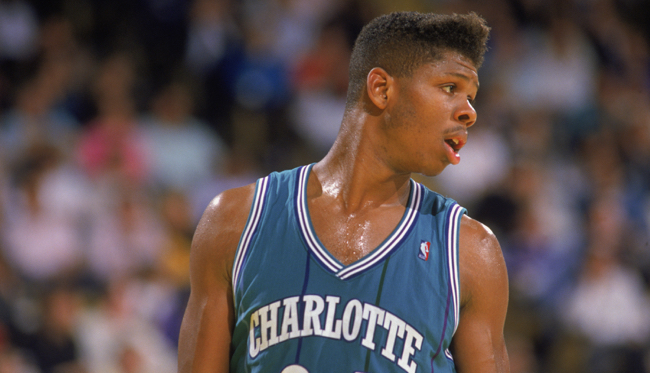
Reid was perhaps as famous for his record label (Hi-Top Fade Records, which is hysterical) – one which helped launch Blackstreet to prominence – as he was his basketball skills. A former back-to-the-basket, 6’9 power forward, Reid eventually expanded his range to better carve out a career in the NBA. He’s now an assistant coach at Patrick Henry Community College.
David Wingate
For more on David Wingate’s whereabouts, check out our Seattle SuperSonics “Where Are They Now” feature.






